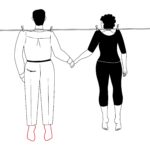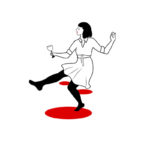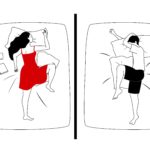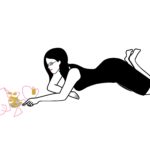A Story Of Two Honeymooners Exploring The Remote Courtyards Of Prague, Budapest And Dubrovnik
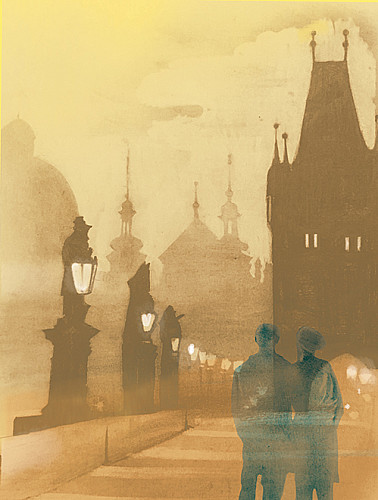
There was a nip in the air. Some may call it a frozen point of time. We only felt a warm suffusing feeling surge through our bodies. Snow clung to our eyelashes, curling inwards to stay warm. Not for long of course, as it would melt and trickle down as tepid water. The streets were soulless, twisting and winding with buildings huddled together to stay snug. The pebble stones of Europe, forming delicious curves as lovers’ feet grind against them and with tourists’ enthusiastic tread, were not visible under the thick blanket of snow. Lush, deep and virginal, it looked from afar like a down feather comforter; you could tuck your toes in and wriggle under, dreaming of spring blossoms.
Perhaps it was a stretch to think we would fuel our love in the dead of winter. But marriages in Mumbai happen in balmy breezes and some may say the true test of romance is to kindle fires in the bitter cold. Discovering the dark history of the Continent under the beating sun of summer was for philistines. The ones with character and mettle surrounded themselves with the reflecting light of gas lamps that looked hazy in the crackling air. The pink blush that crept into our cheeks, the rosy-blue temper of our lips, and the slow embrace to beat the diving temperature battled desire and made way for an old-world romance.
We began to imagine a life on the calmer side of Prague’s Malá Strana. On the Charles Bridge, 30 baroque statues towered broodingly, and the Gothic shadows fell long on those evocative 500 metres, telling tales of darker times. There had been blood on the walls, there had been lovers who held hands, until the bridge, which was meant to forge ties, separated them. It described a time of mystery and madness; moments of furore. The placid mise en scene belied this, but the mind knew better. The heart beat faster, keeping pace with the pounding feet as the lovers were chased by naysayers. The silence around was deafening. If only the waves of River Vltava would crash mercilessly to calm the heart. If the world made noise, the mind could be silent. Summer was a pretence. A pretence to understand the truth of a city. It was sunshine and flowers and happy, smiling people. They all returned to their broken lives. In the harshness of winter the gaps were visible, the thoughts flooded in, mending what could not be ignored. There was nothing to hide behind. You faced the music in silence.
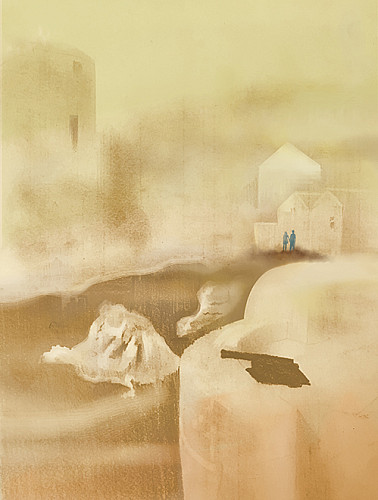
It was not always silent in Prague. If the opera house sang a tune, then the fervent chatter at the Christmas markets spun yarns. Stories of people’s lives, of cheer, of celebrated moments over hot mulled wine floated through the-Romanesque-making-sweet-love-to-the-Gothic 10th-century Old Town square in metaphysical abandon. Turning the pages of time via Josefov (the Jewish quarter), the 14th-century Wenceslas Square or Church of Our Lady before Týn along the way. The Prague Castle, the seat of the Holy Roman Empire, Czechoslovakia and now the Czech Republic, where the Bohemian crown jewels reside, had etchings in stone that you could see with your mind’s eye; Saint Vitus Cathedral held silhouettes in its arms. Standing at the gates outside, taking in the spired city that had been enveloped in white to depict a false sense of innocence, you saw the grey in the hidden courtyards of the cobbled alleys.
Our fingers curled together, knitting patterns on the rough wooden table. Our breaths came out in steamy bursts, condensation clung to our lips. We were lovers from the turn of the 20th century, escaping reality for a few moments into the golden age of beautiful Budapest through its coffee houses like the Művész that we wandered into. Or the overt passion of a kert, an open-air ‘ruin pub’ that demands that you huddle together. Close enough that your mind stopped thinking. Enough to lead you to one of Budapest’s ‘secret’ thermal baths fed by natural springs to help you cool off, topped off with Gellért’s thermal spa to rejuvenate and prepare for another day. Perhaps a day that could be lived in contemporary times, where Nobu would play truant with Buddha-Bar, where we drank ourselves into deep inebriation and whispered the night away.
The Danube severed the large city, but it seemed whole. Like the marriage of two individuals with very distinct personalities. The castle district on one side of the Danube had many stories to speak of, but we could only see the chapters through the monuments, or while making our way, hand-in-hand, through the 2,200 metres of the Szemlõhegyi caves riddled with mineral precipitations. You couldn’t miss the bullet holes and shrapnel etched on buildings, or the sharpness of the Hungarian art on display at the National Gallery in Buda Castle (accessed by a funicular ride), even as the castle gates’ menacing black figures in wrought iron gazed watchfully as you dared to enter. And yet, the city had mellowed. It glowed with a quiet dignity, as you stood on one of its eight bridges, staring into the deceptive darkness with lights liberally splattered like war paint, glittering like a bejewelled bride, ready to come into her own.
She held me close. We swirled in silence. Her head only reached my chin, but we fit. I imagined the ballerinas pirouetting gracefully last night. In the peak of winter, the opera houses opened up in all their grandeur. The best artistes swung into action, the lights shone bright, the opulence of the performing chambers was larger than life. This was not the touristy show of the summer, this was art. At the Hungarian State Opera House a story that told the tale of a better time unfolded. Or worse, depending on how you looked at it. And then, we were on the city ice rink. Even as the beautiful castle tried desperately to throw a reflection on the brittle surface riddled by skating figures, I knew the city couldn’t hold a candle to my love at first site: Prague. As Franz Kafka imagined it, perhaps while sitting in Cafe Milena, ‘Prague never lets you go. This dear little mother has sharp claws.’
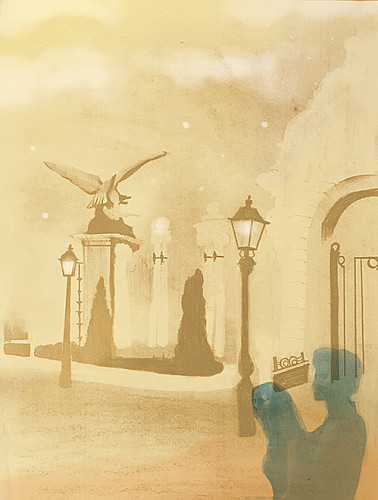
We walked the 1,940 metres of Dubrovnik’s walls, the first of which were built in the 9th century. It usually takes about two hours, it took us six. Not because we fought against the throngs of the summer tourists; rather, the car-free streets were achingly bare as the locals had long left the historical old town for the modern suburbs. It made room for moments of passion that snuck into fortified medieval corners, cold baroque buildings, against darkened glass storefronts that were shrouded with our steamy breath, under spindly naked branches that shivered with passion and showered a cascade of white dust on us. Melting fast on your face as you held her close. As you parted and found your jacket soaked. We were drawn into the Dubrovnik Winter festival, filled with the pulsating beats that mirrored our pulses, food that satiated the senses but never the gnawing hunger inside, and a continuation of the mulled wine journey that flowed like blood in our veins. Or the rich sounds from the Dubrovnik Symphony Orchestra, for culture had nothing to do with beaches and sun tans, and bonds are forged over the soaring notes of classical harmony. Perhaps there were those who were looking for King’s Landing, but there was another song of ice and fire that we experienced, and it had nothing to do with games or thrones.
Set inside a Napoleonic fort near the city’s cable-car station, a permanent exhibition in the war museum is dedicated to the siege of Dubrovnik during the Homeland War of the 1990s, where the local defenders stationed inside the fort ensured the city wasn’t captured. The walls of Dubrovnik may be strong and thick, but the turrets and towers also had aching stories to tell, as long as you stood and listened. Moments of war and peace, moments of passion that died, and lives lived to the fullest.
High above the city in the cable car, we took in the twinkling lights in silence. No jostling crowds, just us. Lonely in our togetherness. Through this mystical honeymoon, we spoke, and we remained quiet. We found a comfort in knowing that we don’t know. We accepted reality, we knew we would go back to find ourselves, fill in the gaps. After all, we were women of the world.
Related posts from Verve:
Verve Trending
Sorry. No data so far.
us on Facebook to stay updated with the latest trends

